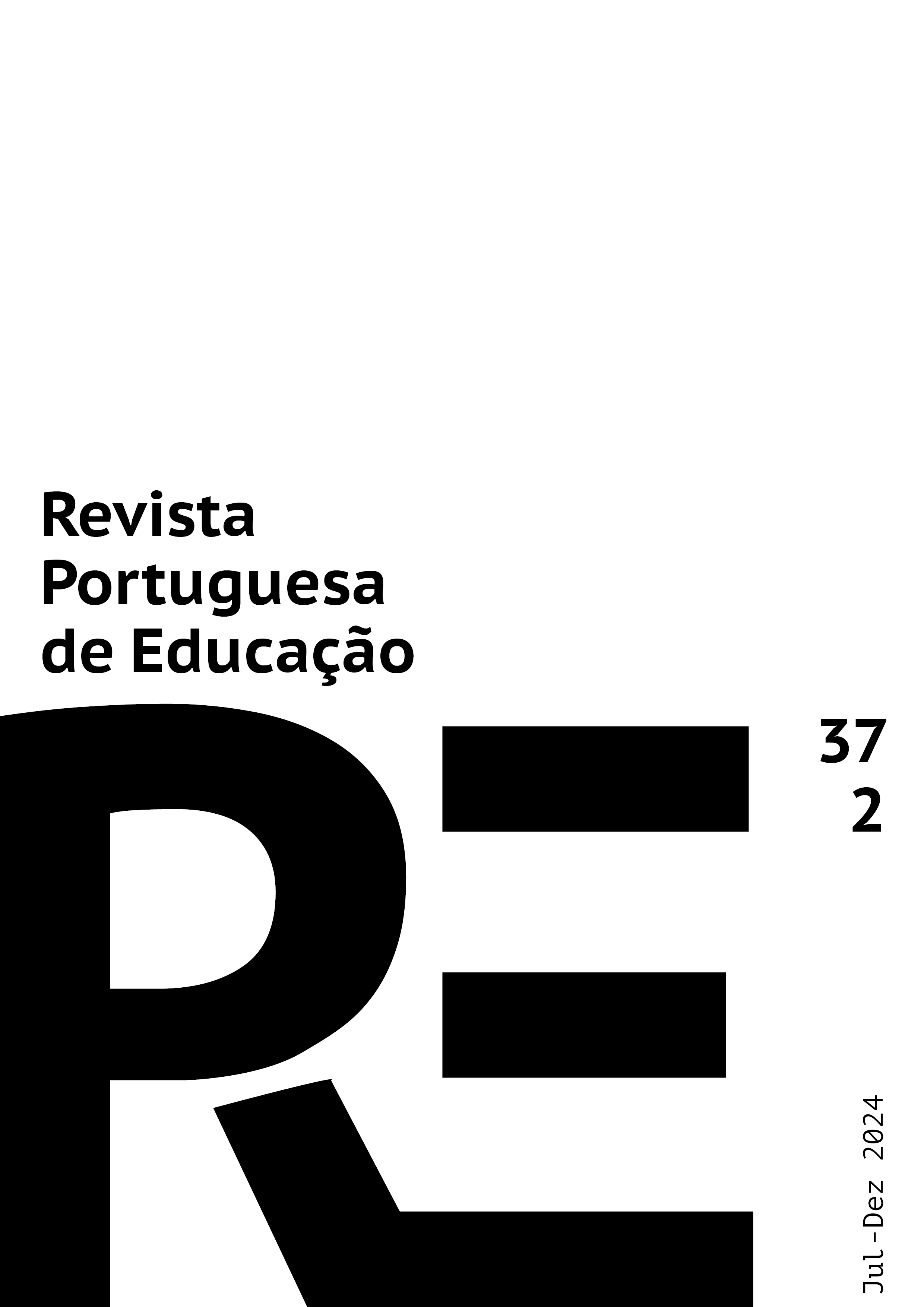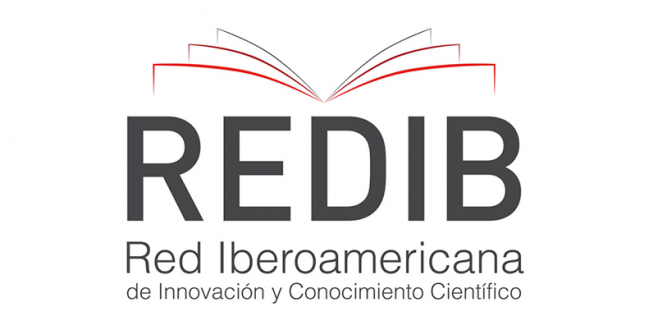Relación entre la simulación en un contexto académico y las competencias clínicas en estudiantes de logopedia: Una revisión sistemática
DOI:
https://doi.org/10.21814/rpe.32901Palabras clave:
Entrenamiento simulado, Aprendizaje interactivo, Logopedia, Educación en salud, Competencia clínicaResumen
El nivel de aceptación e integración de las prácticas de simulación ha crecido de forma generalizada en diferentes contextos educativos, incluida la logopedia. La simulación permite aprender y/o aplicar directamente los conocimientos adquiridos en un entorno seguro, pero no está claro si estas competencias se transfieren a la práctica clínica. El objetivo es analizar la relación entre las prácticas de simulación en un contexto académico y las competencias clínicas en logopedia. Esta revisión sistemática siguió las directrices PRISMA. Dos autores extrajeron los estudios primarios de las bases de datos PubMed-central, SciELO y EBSCOhost sin restricciones de tiempo ni de idioma. Los artículos se introdujeron de forma independiente en el programa Rayyan para gestionar el proceso de cribado, selección y duplicación de resultados. La calidad metodológica se evaluó mediante la tabla Quality Assessment Tool for Quantitative Studies del Effective Public Health Practice Project. La búsqueda arrojó 590 artículos para el cribado y seis se consideraron elegibles. Se informaron efectos positivos de las prácticas de simulación en un contexto académico, especialmente las simulaciones de alta fidelidad (p. ej., maniquíes; estudios de casos de realidad virtual) en las habilidades clínicas interpersonales, la evaluación, la intervención y el seguimiento, así como en la autopercepción, la ansiedad y el estrés de los estudiantes. El nivel de evidencia varió de bajo a moderado. Los beneficios reportados en la literatura apoyan la integración de las prácticas de simulación educativa en los programas de grado y máster en Logopedia como complemento a las prácticas de aprendizaje más tradicionales.
Descargas
Citas
Alanazi, A. A., & Nicholson, N. (2019). Audiology and speech-language pathology simulation training on the 1-3-6 early hearing detection and intervention timeline. American Journal of Audiology, 28(2), 348-361. https://doi.org/10.1044/2019_AJA-18-0185
Bartlett, R. S., Bruecker, S., & Eccleston, B. (2021). High-fidelity simulation improves long-term knowledge of clinical swallow evaluation. American Journal of Speech-Language Pathology, 30(2), 673-686. https://doi.org/10.1044/2020_AJSLP-20-00240
Carter, M. D. (2019). The effects of computer-based simulations on speech-language pathology student performance. Journal of Communication Disorders, 77, 44-55. https://doi.org/10.1016/j.jcomdis.2018.12.006
Ciliska, D., Miccouci, S., & Dobbins, M. (2010). Effective public health practice project (EPHPP): Quality assessment tool for quantitative studies. Hamilton, Effective Public Health Practice Project. https://merst.healthsci.mcmaster.ca/ephpp/
Clinard, E. S. (2022). Increasing student confidence with medically complex infants through simulation: A mixed methods investigation. American Journal of Speech-Language Pathology, 31(2), 942-958. https://doi.org/10.1044/2021_AJSLP-21-00234
Cook, D. A., Hatala, R., Brydges, R., Zendejas, B., Szostek, J. H., Wang, A. T., Erwin, P. J., & Hamstra, S. J. (2011). Technology-enhanced simulation for health professions education. JAMA, 306(9), 978-988. https://doi.org/10.1001/jama.2011.1234
De Wever, J., Hainselin, M., & Gignon, M. (2023). Applied improvisation and transdisciplinary simulation: A necessity for any health curriculum?. Frontiers in Medicine, 10, e1237126. https://doi.org/10.3389/fmed.2023.1237126
Dudding, C. C., & Nottingham, E. E. (2018). A national survey of simulation use in university programs in communication sciences and disorders. American Journal of Speech-Language Pathology, 27(1), 71-81. https://doi.org/10.1044/2017_AJSLP-17-0015
Eichorn, N., Zarn, M., Moncrieff, D., Sposto, C., Lee, S., Hoffman, J. E., Levy, M., & Caplan, J. (2021). Original interprofessional simulations to train students in CSD and related health professions in team-based health care. Communication Disorders Quarterly, 43(1), 23-31. https://doi.org/10.1177/1525740120942127
Estis, J. M., Rudd, A. B., Pruitt, B., & Wright, T. (2015). Interprofessional simulation-based education enhances student knowledge of health professional roles and care of patients with tracheostomies and Passy-Muir® Valves. Journal of Nursing Education and Practice, 5(6), 123-128. https://doi.org/10.5430/jnep.v5n6p123
Ferguson, N. F., & Estis, J. M. (2018). Training students to evaluate preterm infant feeding safety using a video-recorded patient simulation approach. American Journal of Speech-Language Pathology, 27(2), 566-573. https://doi.org/10.1044/2017_AJSLP-16-0107
Gaba, D. M. (2007). The future vision of simulation in healthcare. Simulation in Healthcare: Journal of the Society for Simulation in Healthcare, 2(2), 126-135. https://doi.org/10.1097/01.SIH.0000258411.38212.32
Hamilton, D., McKechnie, J., Edgerton, E., & Wilson, C. (2021). Immersive virtual reality as a pedagogical tool in education: A systematic literature review of quantitative learning outcomes and experimental design. Journal of Computers in Education, 8(1), 1-32. https://doi.org/10.1007/s40692-020-00169-2
Healthcare Simulation Dictionary. (2020). Healthcare simulation dictionary (2nd Ed.). Agency for Healthcare Research and Quality. https://doi.org/10.23970/simulationv2
Hill, A. E., Ward, E., Heard, R., McAllister, S., McCabe, P., Penman, A., Caird, E., Aldridge, D., Baldac, S., Cardell, E., Davenport, R., Davidson, B., Hewat, S., Howells, S., Purcell, A., & Walters, J. (2021). Simulation can replace part of speech-language pathology placement time: A randomised controlled trial. International Journal of Speech-Language Pathology, 23(1), 92-102. https://doi.org/10.1080/17549507.2020.1722238
Hoepner, J. K., & Hemmerich, A. L. (2020). Using formative video competencies and summative in-person competencies to examine preparedness for entry-level professional practice. Seminars in Speech and Language, 41(4), 310-324. https://doi.org/10.1055/s-0040-1713782
Horton, S., Byng, S., Bunning, K., & Pring, T. (2004). Teaching and learning speech and language therapy skills: The effectiveness of classroom as clinic in speech and language therapy student education. International Journal of Language and Communication Disorders, 39(3), 365-390. https://doi.org/10.1080/13682820410001662019
Kaplonyi, J., Bowles, K. -A., Nestel, D., Kiegaldie, D., Maloney, S., Haines, T., & Williams, C. (2017). Understanding the impact of simulated patients on health care learners’ communication skills: A systematic review. Medical Education, 51(12), 1209-1219. https://doi.org/10.1111/medu.13387
Lewis, A., Rudd, C. J., & Mills, B. (2018). Working with children with autism: An interprofessional simulation-based tutorial for speech pathology and occupational therapy students. Journal of Interprofessional Care, 32(2), 242-244. https://doi.org/10.1080/13561820.2017.1388221
Mills, B., Hansen, S., Nang, C., McDonald, H., Lyons-Wall, P., Hunt, J., & O’Sullivan, T. (2020). A pilot evaluation of simulation-based interprofessional education for occupational therapy, speech pathology and dietetic students: Improvements in attitudes and confidence. Journal of Interprofessional Care, 34(4), 472-480. https://doi.org/10.1080/13561820.2019.1659759
Nestel, D., & Kelly, M. (2017). An introduction to healthcare simulation. In D. Nestel, M. Kelly, B. Jolly & M. Watson (Eds.), Healthcare simulation education: Evidence, theory and practice (pp. 1-6). John Wiley & Sons. https://doi.org/10.1002/9781119061656.ch1
Olwen-Smith, T., Bessel, N., & Scholten, I. (2013). Are new graduate speech and language therapists ready to work with swallowing disorders?. Journal of Clinical Practice in Speech-Language Pathology, 15(2), 80-86. https://www.researchgate.net/publication/259564726_Are_new_graduate_speech_and_language_therapists_ready_to_work_with_swallowing_disorders
Penman, A., Hill, A. E., Hewat, S., & Scarinci, N. (2021). Does a simulation‐based learning programme assist with the development of speech-language pathology students’ clinical skills in stuttering management?. International Journal of Language & Communication Disorders, 56(6), 1334-1346. https://doi.org/10.1111/1460-6984.12670
Rethlefsen, M. L., Kirtley, S., Waffenschmidt, S., Ayala, A. P., Moher, D., Page, M. J., & Koffel, J. B. (2021). PRISMA-S: An extension to the PRISMA statement for reporting literature searches in systematic reviews. Systematic Reviews, 10(1), 1-19. https://doi.org/10.1186/s13643-020-01542-z
Robinson, K. E., Allen, P. J., Quail, M., & Beilby, J. (2020). Virtual patient clinical placements improve student communication competence. Interactive Learning Environments, 28(6), 795-805. https://doi.org/10.1080/10494820.2018.1552869
Rumbach, A. F., Aldridge, D., & Hill, A. E. (2021). Student perceptions of simulation to enhance clinical readiness for assessment and management of adults with voice disorders. Journal of Voice, 38(3), 641-653. https://doi.org/10.1016/J.JVOICE.2021.10.014
Ward, E. C., Caird, E., Khanal, S., Kularatna, S., Byrnes, J., Penman, A., Mcallister, S., Baldac, S., Cardell, E., Davenport, R., Davidson, B., Hewat, S., Howells, S., Mccabe, P., Purcell, A., Walters, J., & Hill, A. E. (2022). A cost analysis of a 5-day simulation-based learning program for speech-language pathology student training. International Journal of Speech-Language Pathology, 25(5), 688-696. https://doi.org/10.1080/17549507.2022.2115138
Ward, E. C., Hill, A. E., Nund, R. L., Rumbach, A. F., Walker-Smith, K., Wright, S. E., Kelly, K., & Dodrill, P. (2015). Developing clinical skills in paediatric dysphagia management using Human Patient Simulation (HPS). International Journal of Speech-Language Pathology, 17(3), 230-240. https://doi.org/10.3109/17549507.2015.1025846
Weir-Mayta, P., Green, S., Abbott, S., & Urbina, D. (2020). Incorporating IPE and simulation experiences into graduate speech-language pathology training. Cogent Medicine, 7(1), e1847415. https://doi.org/10.1080/2331205x.2020.1847415
Descargas
Publicado
Cómo citar
Número
Sección
Licencia
Derechos de autor 2024 Claúdia Runcan , Irina Golovanova , Inês Tello Rodrigues

Esta obra está bajo una licencia internacional Creative Commons Atribución-CompartirIgual 4.0.
1. Los autores y autoras conservan los derechos de autor y conceden a la revista el derecho de la primera publicación, con el trabajo simultáneamente disponible bajo la Licencia Creative Commons Attribution que permite compartir el trabajo con el reconocimiento de la autoría y publicación inicial en esta revista.
2. Los autores y autoras pueden asumir contratos adicionales separadamente para la distribución no exclusiva de la versión del trabajo publicada en esta revista (por ejemplo, depositar en un repositorio institucional o como capítulo de libro), con el reconocimiento de la autoría y publicación inicial en esta revista.
3. Los autores y autoras están autorizados y son incitados/as a publicar y compartir su trabajo en línea (por ejemplo, en repositorios institucionales o páginas personales) antes o durante el proceso editorial, pues puede dar lugar a modificaciones productivas o aumentar el impacto y las citas del trabajo publicado (Véase El Efecto del Acceso Libre).
Esta obra está disponible bajo la Licencia Creative Commons Atribución-CompartirIgual 4.0.




















